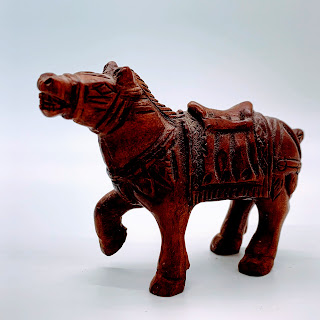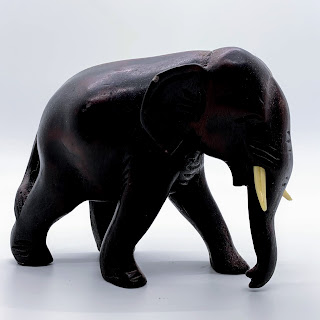
This trinket was picked up for me in the summer of 1998 by my friend Chad while he was over in India for an MIT-India program. It’s actually an abstract representation of Ganesh, the elephant god. Ganesh is the younger son of Shiva and Parvati according to Hindu mythology. It’s made from teak, with a red lacquer coating.
This jade turtle was picked up for me in the summer of 1998 by my friend Andy while he was over in China for an MIT-China program. He found it at the Shaanxi History Museum while touring in Xi'an (sound familiar?). The turtle represents good fortune and/or long life. Apparently, this turtle and the lion were in the same section in the Xi'an store, maybe even the same shelf. Now they are again together, on the other side of the world.
This jade lion was picked up for me by my friend Sandia while she spent the summer of 1998 in China. She found it at the Shaanxi History Museum while touring in Xi'an. The lion represents a guardian in Chinese myth. It’s made from Lan Tien jade, which is actually translucent enough to change colors depending on how you hold it.
This cat on a scarab was picked up for me by my friend Youssef while he was in Egypt during the summer of 1998. The cat may represent Bastet, the Cat-headed goddess of love, sex and fertility. Like the ferocious war goddess Sekhmet, Bastet was originally a lioness deity, but from c.900 BC she began to be represented as a cat, perhaps because of her gentler nature.
The scarab probably represents Khepry, a divine scarab beetle which was the dawn manifestation of the sun god. Khepry is typically represented pushing the sun up into the sky, an image derived from the scarab rolling a ball of dung. To the Egyptians, the scarab beetle was a symbol of rebirth, regeneration and transformation. I think the carving’s made from black basalt, like the Rosetta Stone.
ENGLAND:I bought this tin soldier in London during one of my trips there. I seriously have no idea which trip…maybe 1993, or 1997, or 1999. But since I didn’t really start my “collection” until 1998/1999, I’ll say I got it in 1999.
Subscribe to:
Comments (Atom)
























Follow Us
Were this world an endless plain, and by sailing eastward we could for ever reach new distances